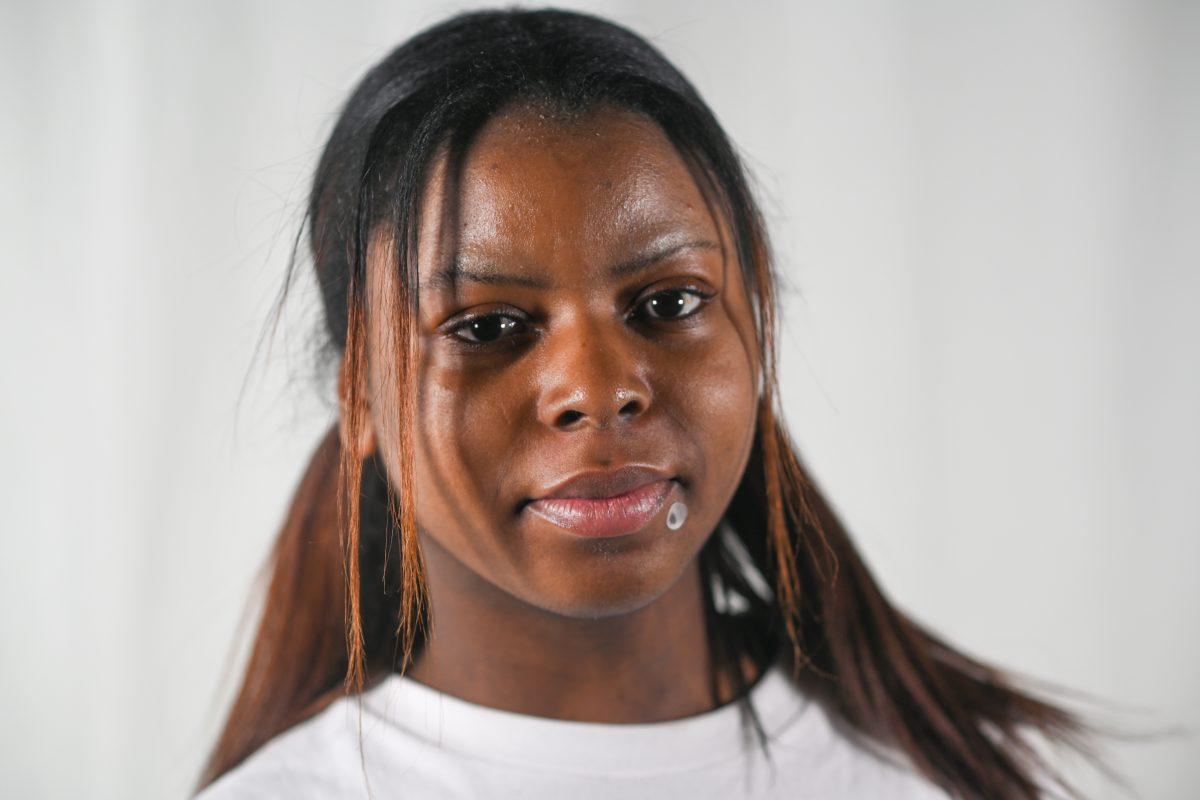At its peak, the internet works as a tool to serve us. At the click of a finger, ChatGPT drafts emails, YouTube provides cooking tutorials and Pinterest curates inspiration in all aspects of life. But when everything is handed to us so effortlessly, we have to wonder — are we making choices, or are they being made for us?
The question of originality versus algorithm-driven influence played out in real-time when a tweet went viral last month of a woman documenting what she thought would be a great outfit to the Louvre — a gray sweater and pleated skirt matched with red tights and slingback heels — only to see another woman wearing a near replica, switching out the red heels for black and an off-shoulder look for the sweater.
Comments came quickly and judgments were sharp as few expressed their disbelief of wearing slingback heels to a walking-intensive museum whilst the majority fixated on the implications of the two coincidentally wearing the same overall outfit.
“This is what happens when you don’t have your own taste and just copy everything from TikTok and Instagram,” a commenter wrote, condemning the creator for their perceived lack of originality.
Trendy sameness seems to be rampant all over social media and is pouring into real life — in the clothes people wear, how they style their hair, etc. People are expected to share what they have and those who aren’t willing to do so are frowned upon and labeled as “gatekeepers.” I’ve seen people ask for an ID on basic pairs of Levi’s jeans instead of just going to the thrift store where there are hundreds of jeans in similar styles.
Sounds dystopian, right?
The ability to see something you like, ask where it’s from and immediately get it is a mindset of mindless consumption that takes all the adventure out of the journey of finding what you love, creating extensions of an algorithm who shop with not ourselves in mind, but everyone else.
There used to be significance behind our belongings. If you complimented a friend or a family on what they were wearing, there was often a story attached — maybe a gift from a loved one or a way of virtue signaling a cause important to them. Style used to be a reflection of lifestyle and experience.
My main gripes are sites like Pinterest, which not only offer inspiration but practically eliminate the need to seek it out yourself. While you can’t completely fault it for today’s copy-paste culture, it’s completely irresponsible to deny that these platforms play a part. It’s up to each person to cultivate a lifestyle that genuinely suits them; however, features such as explore lenses and “shop the look” enable a spoon-feeding algorithm that serves everything directly to users and takes the extra steps out of their hands.
It used to be fun back in the day when I would see a girl dressed up and was able to tell where her inspiration came from. I’m an avid user of Pinterest myself and love using the pinboard features to find new ways to style the pieces I love, but I always make sure to put my own twist to it, working with what I have rather than “shopping the look” and completely replicating what I saw.
In other words, if you’re going to resort to using instant inspiration, put in the effort to make it yours by switching it up in a way that holds significance to you. Because if not, then you’re dressing to present in a certain way rather than actually liking it. Fashion is a journey of self-expression meant to be sought out in the real world through trial and error.
The misfortune of the woman at the Louvre is proof of how predictable style has become. It wasn’t that the two had intentionally tried to copy one another but rather drawn from the same digital well.
It’s convenient that the internet has eliminated the need to figure it out for yourself, but true style still requires exploration. It’s time to begin searching for our own selves and understanding that we don’t need what everyone else has.














